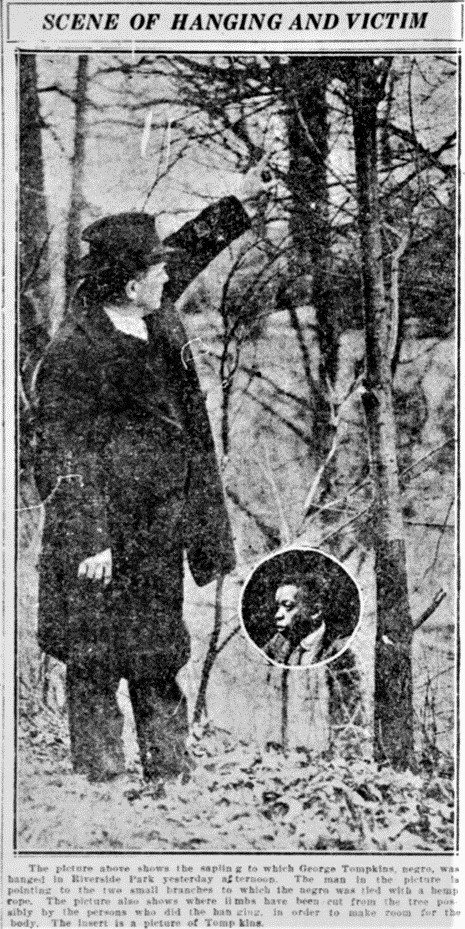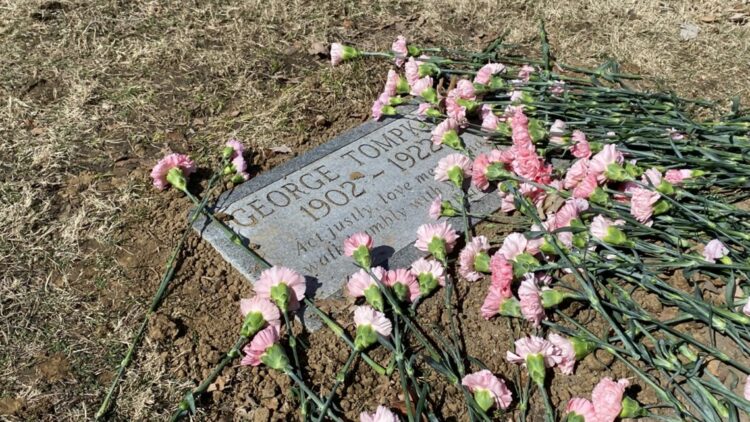19-year-old George Tompkins’ death was ruled a murder, 100 years after he was found lynched in a park in Indianapolis, Ind.
Tompkins was discovered hanging from a Riverside Park tree with his hands bound behind his back on Mar. 16, 1922. His family reportedly said that he walked out of his house at 7:30 a.m. that day and was found near the corner of Lafayette and Cold Spring roads around 2 p.m.
At the time, authorities ruled his death a suicide, which was written on his death certificate. However, that wasn’t the case.
On Mar. 12, Marion County Deputy Chief Coroner Alfie McGinty unveiled a corrected version of the certificate, which listed the young man’s tragic loss of life as a result of homicide. He revealed it at a small memorial event dedicated to Tompkins at Floral Park Cemetery, held by St. Luke’s United Methodist Church-based organization, the Indiana Remembrance Coalition (IRC).
“I was very surprised that this had happened back in 1922 – that the circumstances of this death were not properly examined, but I’m not entirely surprised, given the times in which this occurred,” McGinty said at the memorial.
TRC activists had pushed authorities to revise Tompkins’ death certificate after they learned about his death. They reportedly called it a “hidden chapter of Indianapolis history.”
A volunteer administrator of the group, retired Ball State University communications professor Phil Bremen, said the deceased boy’s case stood out to them because it was dismissed without a follow-up from local police.
“It got written off in two days as a suicide. His lynching was buried before his body was, if you can fathom that,” Bremen said. “He was lynched on Mar. 16 [and] He was buried on Mar. 20. The story disappeared no later than Mar. 19.”
He added that Tompkins’ death appeared on the front pages of Indianapolis newspapers a century ago, but the headlines about it quickly disappeared.
“It was gone from the front pages, gone from the papers in two days.”

Indianapolis Mayor, Joe Hogsett, said, at the young man’s memorial, that he “did not receive justice from his city.”
“In 1922, teenager George Tompkins did not receive justice from his city – neither in life nor death. Today, by remembering and preserving our full history, we commit ourselves to a more just and humane future for all residents of Indianapolis.”
Hogsett also said that recognizing Tompkins’ passing as murder came too late.
“This recognition comes 100 years too late. It is up to public officials like myself and others to preserve and promote equal justice for all residents of our city.”
Afterward, the coalition revealed a headstone for Tompkins’ unmarked grave. They even dedicated the homepage of their official website to him.
Just last week, U.S. Congress passed a bill that would categorize lynching as a federal hate crime. However, the legislation must be approved by President Joe Biden to become a law. The H.R.55 or the Emmett Till Antilynching Act was introduced on Jan. 4, 2021, by Bobby Rush, D-IL. The bill would make lynching a punishable act with its consequence being a hefty fine, prison time, or both.















